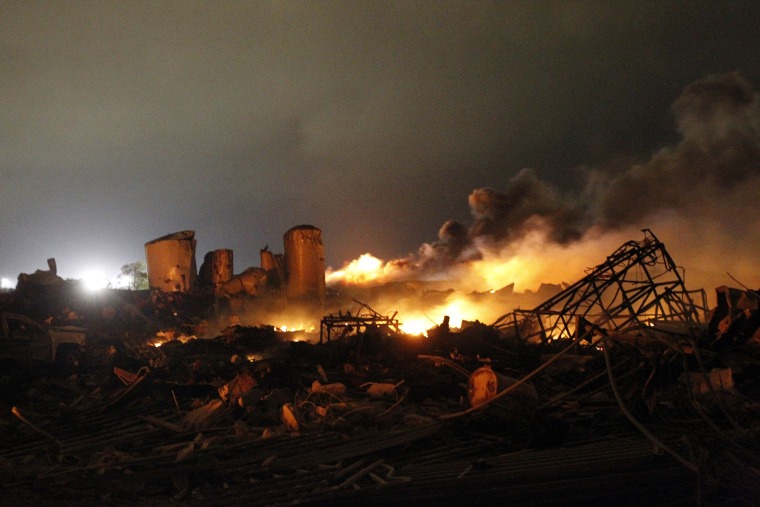The federal government doesn't know how much or how well the potentially explosive chemical found in fertilizer is being stored across the country, a new report by the government accountability office warned this week. In an alarming assessment that highlights the growing environmental and safety concerns around fertilizer and ammonium nitrate plants, the report notes that the industry as a whole is drastically underregulated.
The report was commissioned to identify how to prevent future massive fertilizer plant explosion like the one in West, Texas, that killed 14 people just a year ago.
The federal government is not properly regulating facilities with ammonium nitrate, the report found, and can’t even estimate the number of fertilizer plants that have the substance due to flawed reporting systems and data sharing. The government also does not properly enforce the laws that do exist. Through the information the agency found available, the report can count at least 1,300 plants in 47 states.
The 2013 West, Texas explosion—which also wounded 226—“should never have occurred,” according to the chairman of the U.S. Chemical Safety Board in a report following the explosion. He added that the deadly blast was “preventable” had there been the proper safety precautions taken, according to CNN.
"It resulted from the failure of a company to take the necessary steps to avert a preventable fire and explosion and from the inability of federal, state and local regulatory agencies to identify a serious hazard and correct it," Chairman Rafael Moure-Eraso said in a statement in which he also blamed the government’s regulators.
The report finds that current regulations, if enforced, will help, but suggests additional regulation, as some of the regulations on ammonium nitrate haven’t been updated in four decades.
“While much can be achieved under current regulations, OSHA and EPA regulations contain gaps with respect to ammonium nitrate that may allow unsafe facilities to operate and poor planning to persist,” the writer concludes.
“Although increased regulation may be more burdensome to industry, without some means of ensuring that high-risk facilities plan for and manage the risks associated with ammonium nitrate, such facilities may not be prompted to adequately address the risks the chemical creates for workers and neighboring communities,” the report notes.
